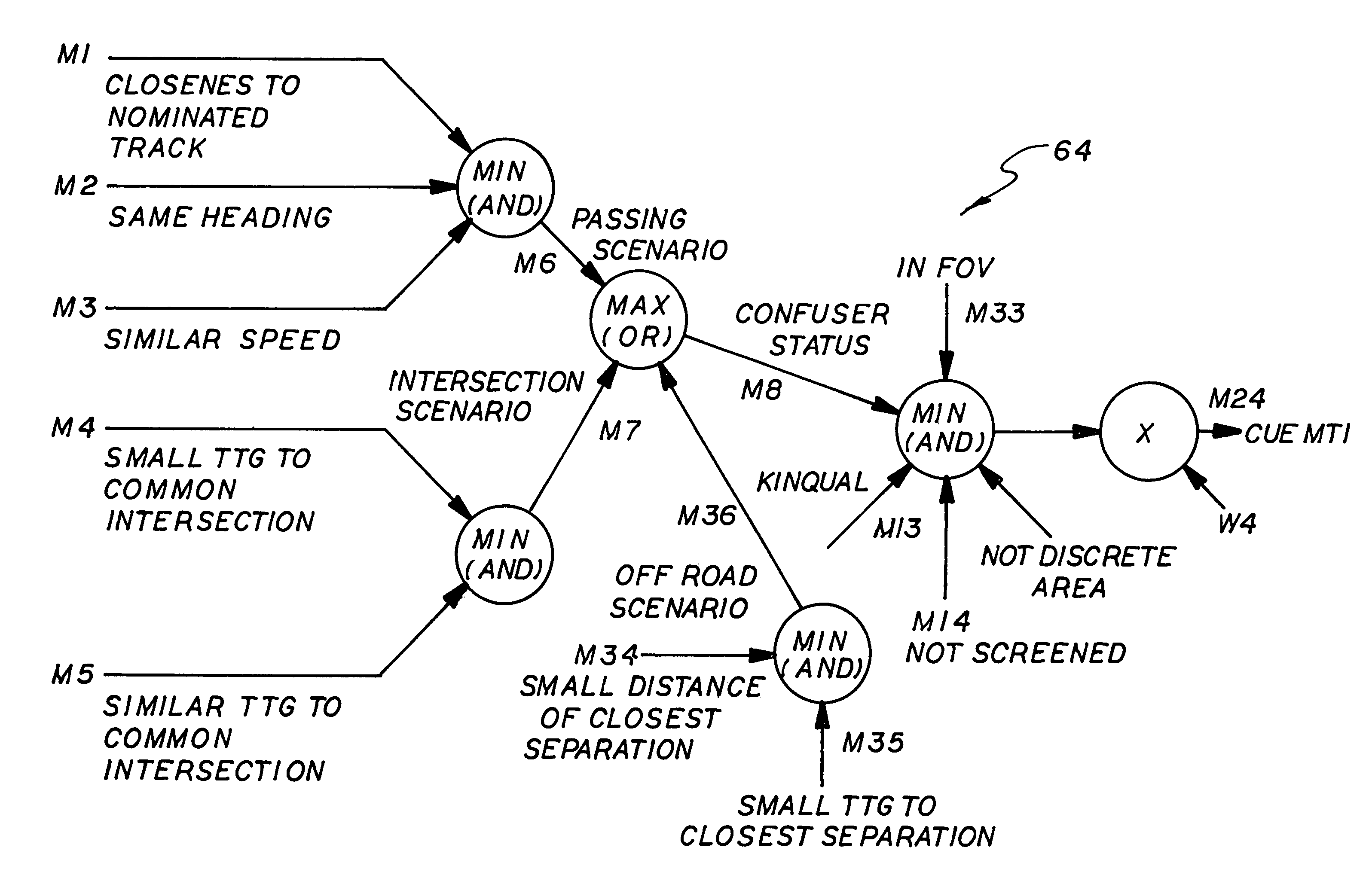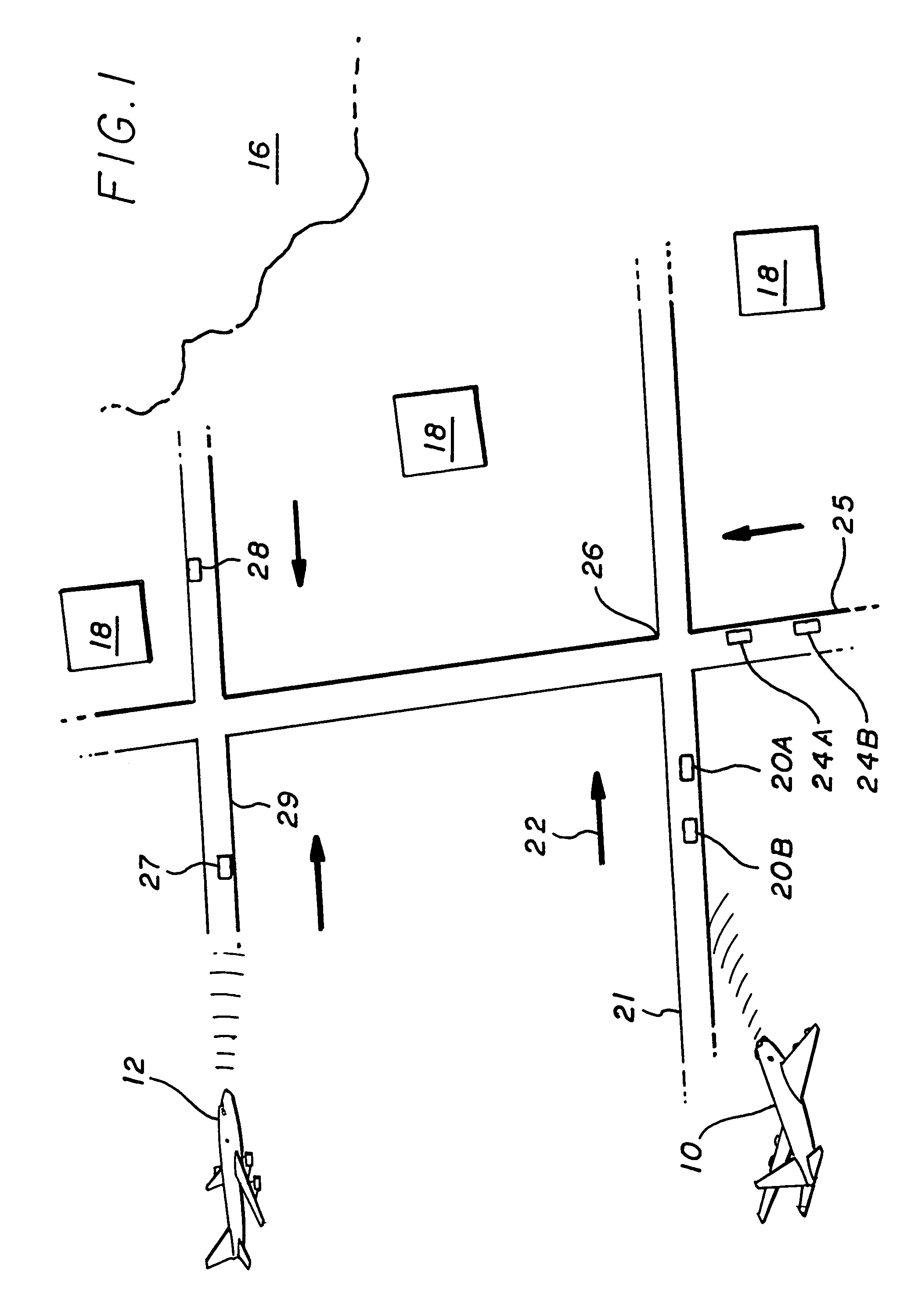Process for sensor resources management
a sensor resource and processing technology, applied in the field of sensor resource management and tracking fusion, can solve the problems of difficult tracking of vehicles on the ground by radar from aircraft, and unclear identity of vehicles for tracking purposes, so as to maximize the performance of the radar system and optimize the ability of the radar system to track vehicles
- Summary
- Abstract
- Description
- Claims
- Application Information
AI Technical Summary
Benefits of technology
Problems solved by technology
Method used
Image
Examples
Embodiment Construction
[0064]Referring to FIG. 1, which is a simplified view of terrain wherein several vehicles are traveling and are being monitored by aircraft 10 and 12. Because the vehicle position as well as its velocity and direction of travel are estimates, they are generally defined as “tracks”, thus vehicle and track are used interchangeably hereinafter. The terrain includes hills 16, with several structures 18 nearby. Vehicles 20A, and 20B are traveling on road 21 in the direction indicated by arrow 22 toward the hills 16. Vehicles 24A, and 24B are traveling on road 25, which intersects road 21 at point 26, while vehicle 27 and 28 are traveling toward each other on road 29 some distance away. The situation illustrated in FIG. 1 is for purposes of illustration, for any real situation in the battlefield will be far more complex. Furthermore, while two aircraft are shown, there may be only one or more than two aircraft involved in the tracking. In addition, while aircraft are used, the system coul...
PUM
 Login to View More
Login to View More Abstract
Description
Claims
Application Information
 Login to View More
Login to View More - R&D
- Intellectual Property
- Life Sciences
- Materials
- Tech Scout
- Unparalleled Data Quality
- Higher Quality Content
- 60% Fewer Hallucinations
Browse by: Latest US Patents, China's latest patents, Technical Efficacy Thesaurus, Application Domain, Technology Topic, Popular Technical Reports.
© 2025 PatSnap. All rights reserved.Legal|Privacy policy|Modern Slavery Act Transparency Statement|Sitemap|About US| Contact US: help@patsnap.com



